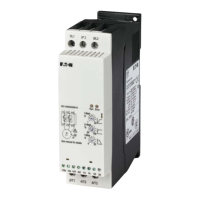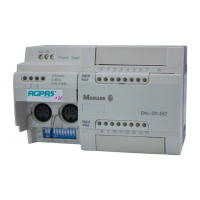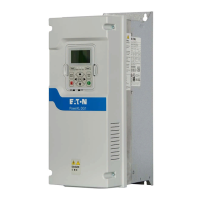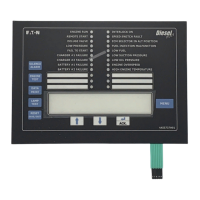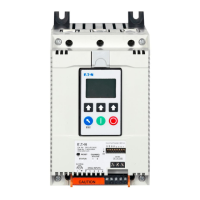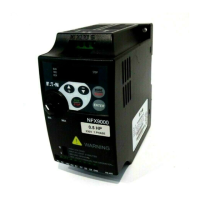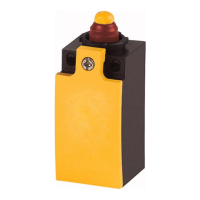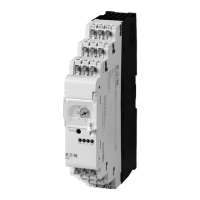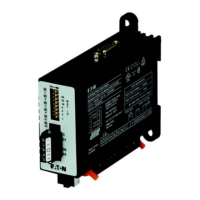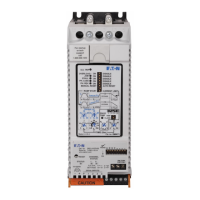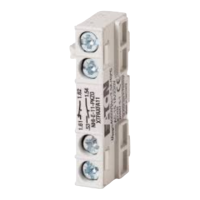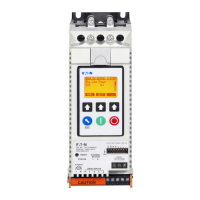2 Engineering
2.11 Motor connection
DS7 Soft starter 09/16 MN03901001Z-EN www.eaton.com 47
Motors with considerably different motor outputs (e.g. 1.5 kW and 11 kW)
should not be connected in parallel to the output of a soft starter. Reason:
Starting problems may occur in the motor with the lower output since this
cannot provide the required torque.
It is therefore advisable to only use motors with similar ratings (maximum
deviation: one rating size).
Figure 30: Parallel operation of multiple motors on a soft starter (variant 2)
2.11.8 Connecting motors
If motors are connected in parallel and an additional motor is connected to
the soft starter’s output during ongoing operation, the soft starter will not
carry out a soft start for the new motor. However, the soft starter must be
able to deliver the entire inrush current (approx. 6 to 8 times the rated motor
current) and the current for the remaining motors. Otherwise, an overload
will occur and the soft starter may be destroyed in the worst case.
→
The total current consumption of all connected motors must not
exceed the rated operational current I
e
of the soft starter.
The overdimensioning of the soft starter is recommended if the
individual motors have high starting currents.
→
Each motor must be protected from overcurrent and thermal
overload (using overload relays and/or thermistor protection).
→
Motor-protective circuit-breakers (Q11, Q12) can also be used
here instead of the overload relays (F11, F12).
→
The last connected motor must not be switched off in operation
since the resulting voltage peaks may cause damage to the
electronic components in the soft starter and thus to its failure.
M1 M2
Q21
L1 L2 L3
T1 T2 T3
M
3 ~
M
3 ~
Q11 Q12
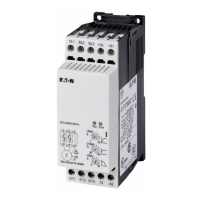
